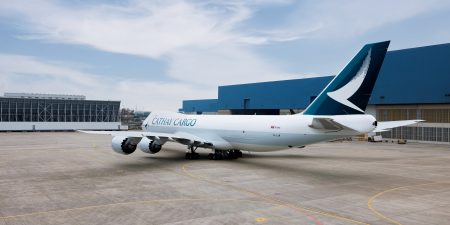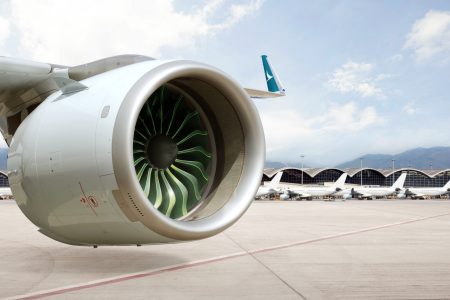Earlier this month Cathay Pacific launched a pilot Corporate Sustainable Aviation Fuel (SAF) Programme, the first major programme of its type in Asia. The programme provides corporate customers the opportunity to reduce their carbon footprint from business travel or airfreight shipments by contributing to the use of SAF, uplifted for the first time from Hong Kong International Airport for Cathay Pacific flights.
This is excellent news for corporate client passengers, forwarders and shippers committed to tackling climate change and reducing their Scope 3 emissions: non-direct emissions which do not involve a business’s primary activity, but may include things such as staff journeys to work and, critically, use of the supply chain.
Increasing the use of SAF is also vital for Cathay Pacific as it continues on its journey, mapped out and reconfirmed by airline trade association IATA in October last year and in sync with the Paris Agreement to limit global warming to 1.5°C – to become carbon-neutral by 2050. Scope 1 emissions (those from assets owned and used by a company for their main business activity) are very much to the fore, and fuel is the airline’s biggest item of non-capital expenditure.
Cathay Pacific has committed to make SAF 10 per cent of its total fuel use by 2030, and the pilot Corporate SAF Programme is an excellent starting point – as it is for the companies that have signed up so far, which include DHL Global Forwarding and Kintetsu World Express.
‘Climate change is the primary challenge of our generation and for those to come,’ says Director Cargo Tom Owen. ‘As a major network cargo carrier, we are working with our overall logistics supply chain with significant initiatives to tackle it. As an example, Cathay Pacific has been pioneering our industry’s move towards more substantial use of SAF, especially in Asia. We all must play our part and there is a lot more to do.’
SAF is a crucial method for aviation to achieve its emission-reduction targets. While new generation aircraft, like the Airbus A350, have new engine technology which have reduced emissions by 10-20 per cent against older aircraft, there is only so much that can be achieved until new technology alternatives such as electric or hydrogen-fuel cells become viable.
Cathay Pacific is a founder member of the Aviation Climate Taskforce, that is looking at some of these more radical ways to decarbonise aviation. But while small, commuter aircraft on short missions may be introduced in the next decade powered by that new technology, jet fuel will continue to power heavy, long-haul operations for many years to come. So, for now, the main onus falls on SAF, as Jan Toschka, President of Shell Aviation, one of the Programme’s two suppliers along with PetroChina, explains.
‘Meeting net-zero emissions in aviation by 2050 is a challenge but one that the value chain can and must achieve by working together,’ he says. ‘As a fuel supplier, we know we have a critical role to play and have set ourselves the goal of becoming a global leader for SAF, with the ambition of supplying 2 million tonnes of SAF per year by 2025.’



